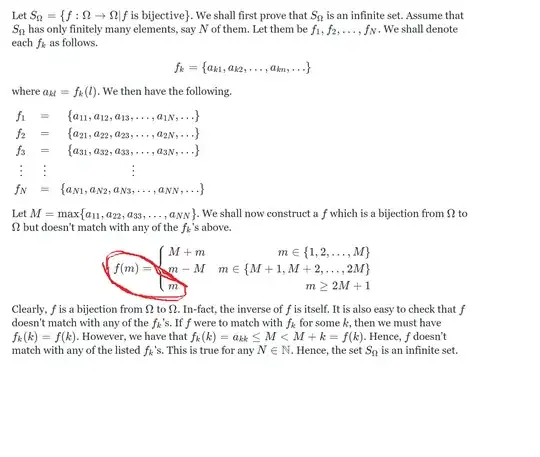Prove that if $\Omega=\{1,2,3,\cdots \}$ then $S_{\Omega}$ is an infinite group(do not say $\infty !=\infty$).
My attempt : I found the answer here if $\Omega=\{1,2,3,\cdots \}$ then $S_{\Omega}$ is an infinite group, but i have some confusion in this answer , My doubt are given below in red line 
according to me here $f(m)=m$ match with $f_k's$ that is $f_k(k)=f(k)$. take $k=1$ ,then $f_1(1)=f(1)=1$
why $f(m) =m $ doesn't match with any of the $f_k's ?$